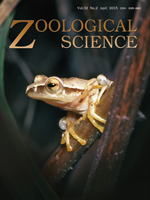Feeding adaptations are a conspicuous feature of avian evolution. Bill and cranial shape as well as the jaw muscles are closely related to diet choice and feeding behaviors. Diurnal raptors of Falconiformes exhibit a wide range of foraging behaviors and prey preferences, and are assigned to seven dietary groups in this study. Skulls of 156 species are compared from the dorsal, lateral and ventral views, by using geometric morphometric techniques with those landmarks capturing as much information as possible on the overall shape of cranium, bill, orbits, nostrils and attachment area for different jaw muscles. The morphometric data showed that the skull shape of scavengers differ significantly from other raptors, primarily because of different feeding adaptations. As a result of convergent evolution, different scavengers share generalized common morphology, possessing relatively slender and lower skulls, longer bills, smaller and more sideward orbits, and more caudally positioned quadrates. Significant phylogenetic signals suggested that phylogeny also played important role in shape variation within scavengers. New World vultures can be distinguished by their large nostrils, narrow crania and small orbits; Caracaras typically show large palatines, crania and orbits, as well as short, deep and sharp bill.
How to translate text using browser tools
1 April 2015
Shape Similarities and Differences in the Skulls of Scavenging Raptors
Si Guangdi,
Yiyi Dong,
Yujun Ma,
Zihui Zhang
ACCESS THE FULL ARTICLE

Zoological Science
Vol. 32 • No. 2
April 2015
Vol. 32 • No. 2
April 2015
convergent evolution
falconiform birds
geometric morphometrics
scavengers
skull morphology




